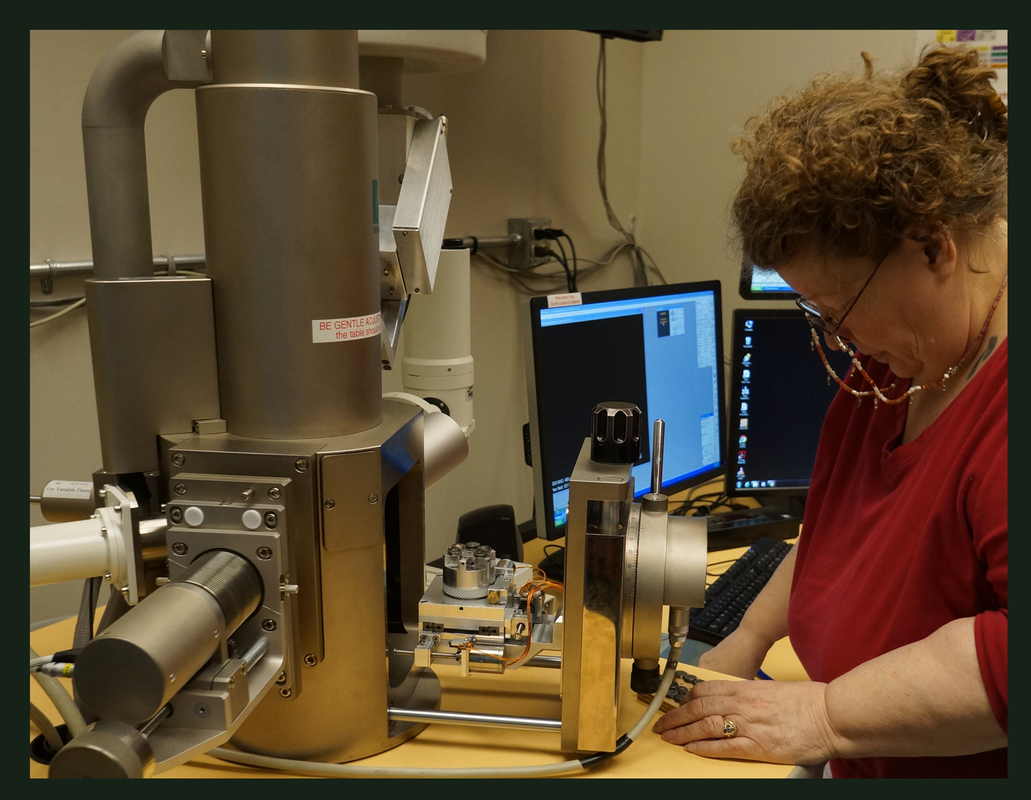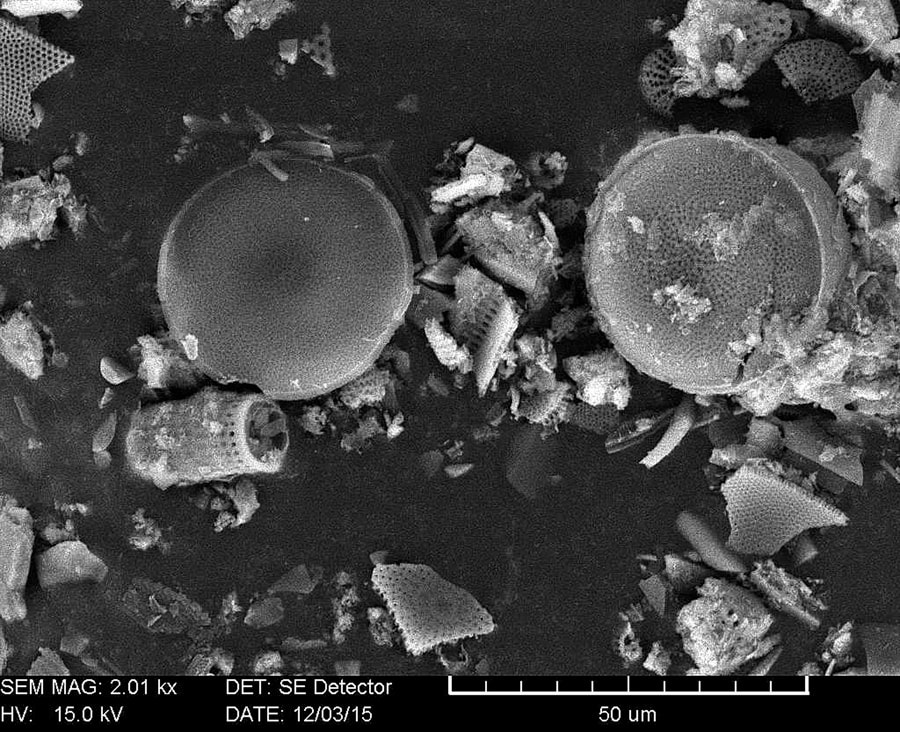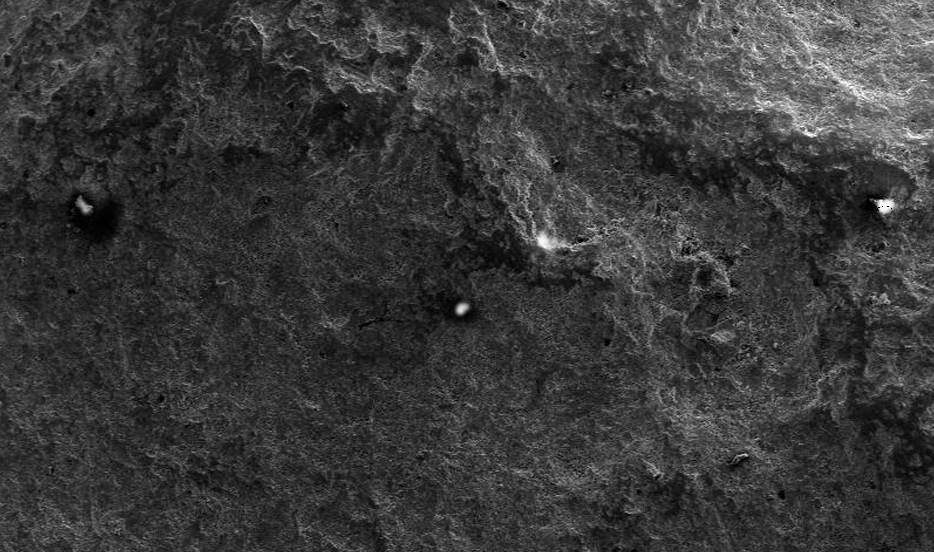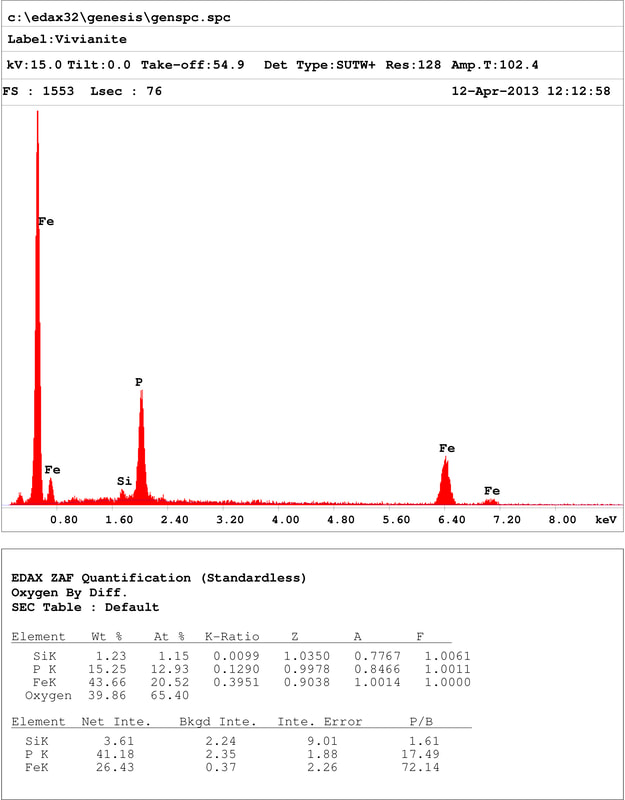The study of pigments is the intersection of many disciplines: art, history, archaeology, anthropology, chemistry, physics...and the list goes on. By using the technology we have available today we can identify pigments by determining their elemental compositions. This can give is important information about where an object was made, match the pigments to specific deposits, identify sibling artifacts. It also gives us insights into cultures of the past, their intellectual and technical abilities, the evolution of human cognition, and the development of cultures.
The image above right is a screen shot of how the data is represented when using scanning electron microscopy. The peaks on the graph show the primary elements of iron, phosphorus and silica, exactly what you want to see when identifying vivianite. The chart below gives the atomic weights of each element. This is very useful in matching to other pigment samples, say, from artifacts, and to samples from deposits. By matching those atomic weights we can prove that two or more samples are identical.
The information contained in a sample the size of the point of a needle can give us reams of useful information.
The information contained in a sample the size of the point of a needle can give us reams of useful information.




